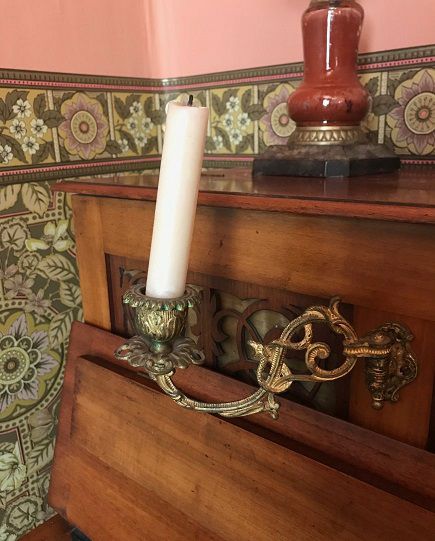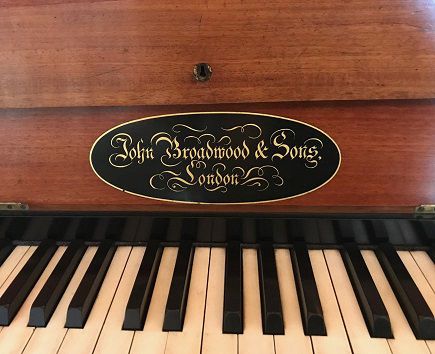NOTES ON A SPECIAL PIANO
- 6 March 2019
- Tamara Patten
When you work in a museum, you’ll occasionally come across a treasure in the collection that particularly intrigues you. For me, one such object is KMHG’s John Broadwood & Sons piano.

It is a wood framed, cottage piano – another name for a small upright piano. It is not the Broadwood piano owned by Katherine Mansfield’s family, but is similar. The piano is made of wood, varnished and polished to a warm hue. Carved wood detail covers silk panels, and a niftily concealed music stand folds out of the lid. There are candle holders on each side to enable the pre-electricity pianist to read their sheet music.

KMHG’s piano was sounding discordant, and since we sometimes allow visitors to play it, I decided to have it tuned. In doing so, I encountered an extremely knowledgeable piano tuner and ended up learning far more about this treasure in our collection than I ever expected.

John Broadwood & Sons was an English piano manufacturer, founded in 1728. Initially the company made harpsichords, but turned to pianos after the latter instrument overtook the harpsichord in popularity. The company became a leader in its field, with composers such as Haydn, Beethoven and Chopin owning Broadwood pianos. John Broadwood & Sons Ltd is still operating today, and in fact holds a Royal Warrant as official manufacturer and tuner of pianos to the royal family.
KMHG’s Broadwood piano dates to the 1860s. Iron frames were standard in pianos from around 1870, and our earlier, wood framed model is now very rare. Prior to iron frames, pianos were expected to last about 30 years. We are lucky to still have ours, 120 years beyond its best before date!

Due to its age, KMHG’s piano is now almost impossible to tune. The strings are different gauges and tensile strengths, and no spare parts for the action design have been manufactured for more than 100 years. Our attempt at tuning the piano was time consuming and very fiddly, as due to their age, the tuning pin block and threads have lost the positive grip necessary to make small adjustments to the strings’ pitch.
After very careful tuning, the piano is still 3 ½ semitones flat in pitch. This is nonetheless a marked improvement as before tuning it sounded rather jarringly like several different instruments being played at once! According to the piano tuner, it is unlikely that the piano would have been able to be tuned to the correct pitch since around 1900. 3 ½ semitones flat doesn’t seem too bad, considering that!
It has been wonderful to learn more about the piano, and understand its rarity and fragility. This helps us better care for this taonga and give it the support it needs to last into the future.
Look out for the John Broadwood & Sons piano in the drawing room at KMHG.
